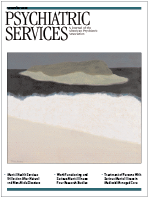Treating Attachment Disorders: From Theory to Therapy
This useful and thoughtful volume was originally published in the German language in 1999 and was immediately sought out by psychotherapists from multiple disciplines. Karl Heinz Brisch, a psychiatrist, psychoanalyst, and child development researcher, is head of the department of pediatric psychosomatic medicine and psychotherapy at Children's Hospital at the Ludwig-Maximillians University of Munich.
Treating Attachment Disorders: From Theory to Therapy presents a clearly expressed review and update of the basic concepts of attachment theory as developed by John Bowlby, Mary Ainsworth, and current contributors. The fundamental evolutionary assumptions of the survival value of attachment behavior are followed through the experiential vicissitudes of parent-child interaction, yielding a system with measures of sensitivity, quality (defined by a constructed "strange situation"), internal representations (working model), and the emergence of exploration and autonomy. There are clear parallels to individuation, dependency, attunement, object constancy as developed in psychoanalytic theory, and infant observations, which are placed in perspective and contrasted with attachment theory.
Fundamental attachment quality (secure, avoidant, ambivalent, or disorganized-disoriented) is clearly defined in terms of the child's reactions to the strange situation (sequential maternal absence and return), and an attempt is made to relate the quality to later childhood and adult psychopathology. Brisch describes a typology of attachment disorders that is evidently transdiagnostic with respect to DSM-IV categories. The typology includes no signs of attachment behavior, undifferentiated attachment behavior, exaggerated attachment behavior, inhibited attachment behavior, aggressive attachment behavior, attachment behavior with role reversal, and attachment disturbance expressed as psychosomatic symptoms. Each of these is elaborated upon in terms of early childhood adversity that disrupted, distorted, or modified secure attachment, leading to working behavioral models of impairments in exploration, physiological regulation and growth, and autonomy and diminished relational satisfaction.
When understood within this multidimensional model, the person emerges more fully than when viewed categorically (for example, as "oppositional" or "passive-aggressive"). The importance of the therapeutic bond is emphasized both as an essential part of the basic framework of trust and as the seed from which change and reconstruction will emerge. Brisch uses an active technique in which he is responsive, available, and sensitive to patients' needs in terms of the frequency and duration of sessions. He freely uses countertransference clues to intuit patients' needs and works toward a corrective attachment experience. How this change occurs is not clear beyond an idea that it has been an auxiliary compensatory experience, as might have occurred earlier in a patient's relationship with a teacher, mentor, or coach.
Brisch proceeds to present various examples of patients with diagnoses including postpartum depression, school phobia, depression in later life, panic disorder, psychotic disorder, and borderline personality disorder. In every situation he is sensitively attuned and responsive to the patients' suffering, the family matrix contributing to symptom aggravation, and patients' special needs at each phase of treatment. Although Brisch acknowledges the validity of internalized mental conflict of sexual or aggressive origin among some patients, he is convinced that the one-person psychoanalytic approach (with a psychostructural, metapsychologic emphasis) misses the major source of psychodevelopmental distress for most patients.
According to Brisch, education, early intervention, use of auxiliary experiences, and an understanding of protective factors to prevent attachment disturbances may be the royal road to the mental hygiene of the future. Although this view may be overly optimistic, contemporary neurobiological investigation suggests a profound central organizing role for attachment in cognition, affect modulation, and impulse regulation.
The pioneering work of Bowlby and Ainsworth and now this thorough integrating contribution by Brisch continue to advance our understanding of psychiatric disorders and approaches to effective treatment.
Dr. Blinder is clinical professor in the department of psychiatry and human behavior at the School of Medicine at the University of California, Irvine.



